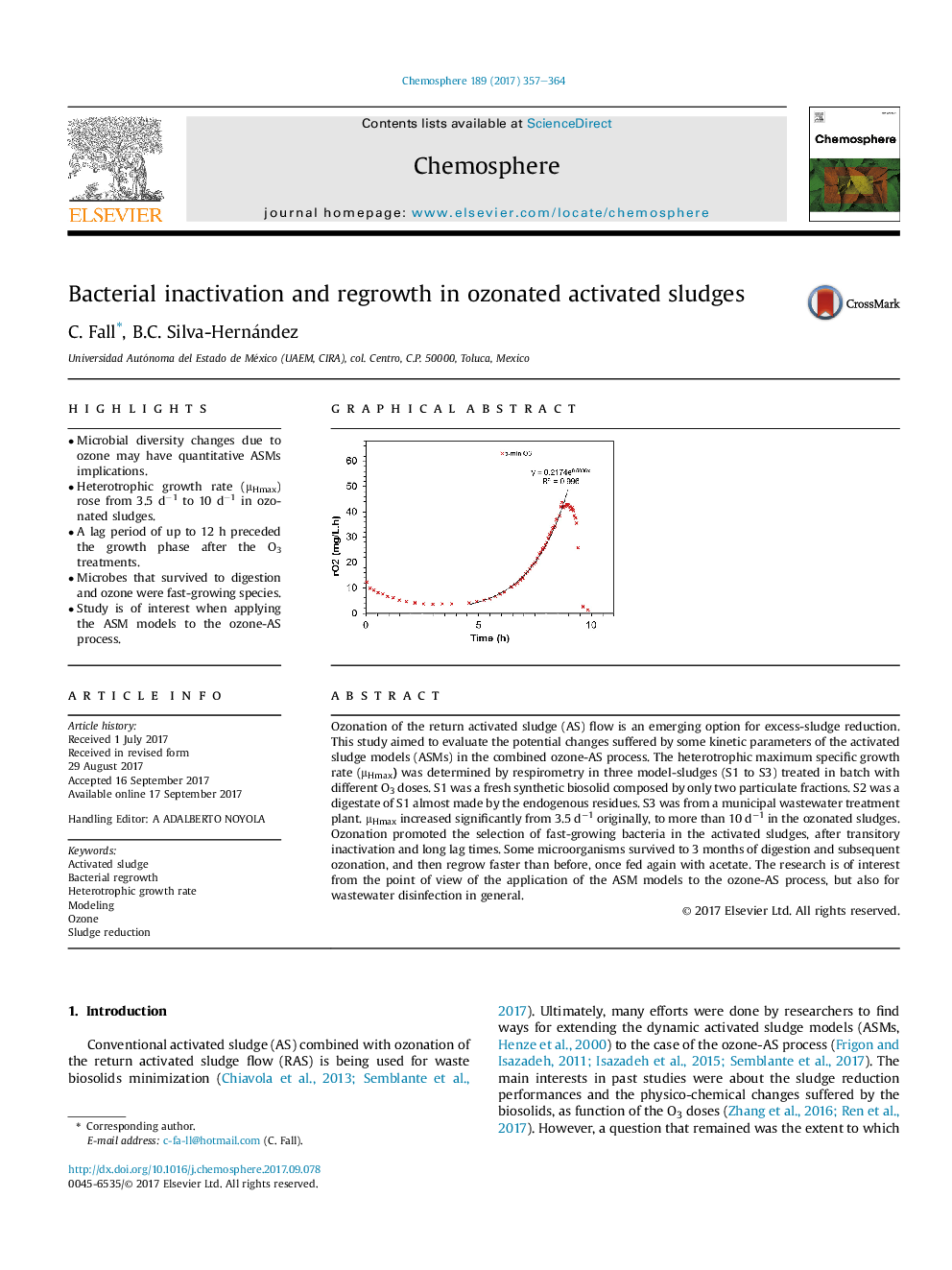| کد مقاله | کد نشریه | سال انتشار | مقاله انگلیسی | نسخه تمام متن |
|---|---|---|---|---|
| 5745920 | 1618782 | 2017 | 8 صفحه PDF | دانلود رایگان |
- Microbial diversity changes due to ozone may have quantitative ASMs implications.
- Heterotrophic growth rate (μHmax) rose from 3.5 dâ1 to 10 dâ1 in ozonated sludges.
- A lag period of up to 12Â h preceded the growth phase after the O3 treatments.
- Microbes that survived to digestion and ozone were fast-growing species.
- Study is of interest when applying the ASM models to the ozone-AS process.
Ozonation of the return activated sludge (AS) flow is an emerging option for excess-sludge reduction. This study aimed to evaluate the potential changes suffered by some kinetic parameters of the activated sludge models (ASMs) in the combined ozone-AS process. The heterotrophic maximum specific growth rate (μHmax) was determined by respirometry in three model-sludges (S1 to S3) treated in batch with different O3 doses. S1 was a fresh synthetic biosolid composed by only two particulate fractions. S2 was a digestate of S1 almost made by the endogenous residues. S3 was from a municipal wastewater treatment plant. μHmax increased significantly from 3.5 dâ1 originally, to more than 10 dâ1 in the ozonated sludges. Ozonation promoted the selection of fast-growing bacteria in the activated sludges, after transitory inactivation and long lag times. Some microorganisms survived to 3 months of digestion and subsequent ozonation, and then regrow faster than before, once fed again with acetate. The research is of interest from the point of view of the application of the ASM models to the ozone-AS process, but also for wastewater disinfection in general.
41
Journal: Chemosphere - Volume 189, December 2017, Pages 357-364
